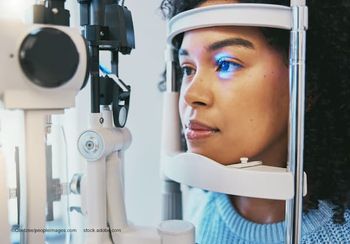
Envision Summit 2025: Surgical challenges of a pediatric retinal detachment secondary to trauma
At the Envision Summit 2025 in San Juan, Puerto Rico, Nita Valikodath, MD, MS, gave insight into a challenging case of a 14-year-old boy who had trauma-related retinal detachment in his right eye, where a further macula-on retinal detachment with retinal dialysis was found in the left.
At the Envision Summit 2025 in San Juan, Puerto Rico, Nita Valikodath, MD, MS, gave insight into a challenging case of a 14-year-old boy who had trauma-related retinal detachment in his right eye, where a further macula-on retinal detachment with retinal dialysis was found in the left.
Video Transcript:
Editor's note: The below transcript has been lightly edited for clarity.
Nita Valikodath, MD, MS:
My name is Nita Valikodath. I'm a clinical assistant professor at the Kellogg Eye Center at the University of Michigan. I presented a surgical challenge that I think many of us in retina have encountered before. This was a case of a 14 year old boy who had trauma related retinal detachment. He was referred to me actually for a funnel retinal detachment in the right eye, but during my exam, I found a macula-on retinal detachment with retinal dialysis in his left eye. So the priority for the case was to address that left eye, which is his better seeing eye, as quickly as possible. Due to his brother, who had other health issues, the family couldn't do surgery until nine days later. And this was challenging, because unfortunately, by the time we got to the exam under anesthesia, his good eye, with the macula-on detachment, had progressed to a total retinal detachment with proliferative intraretinopathy. There was also a starting cataract that was forming. So completely changed the game in terms of our surgical plan.
I think takeaways from this presentation is one, we can be surprised at the time of surgery, and we need to be prepared for anything. Things that we see in clinic may not be what happens at the time of surgery. So making sure that you update the anesthesia team, your nursing team, your circulators, everyone to make sure that we have all the equipment that we need. This is a child. It's going to be a significantly longer surgery, given now that we have to do a scleral buckle and vitrectomy, possible lensectomy. So trying to optimize everything before surgery and before the patient is under anesthesia.
The other challenge, and take away from this is longer operating times can mean deteriorating views, and that was certainly a challenge in this case. And as we saw in the video, there were several membranes that we needed to peel. The decision was made to convert to a bimanual technique very early on in the case, to save the cornea essentially. We didn't end up doing a lensectomy. I felt we had a good enough view to be able to complete the surgery. We wanted to keep the lens in a child as often as we can, if possible. But unfortunately, there was subretinal PFO. Thankfully, it was out of the fovea, and it migrated out of the retina later on in the case. He did develop a visually significant cataract later, which we had to address at a later time.
Another takeaway is that this is a monocular patient, and to try to do things quickly. Unfortunately, in this case, the patient's family didn't have a cell phone or land line. To be able to contact them, we had to rely through a friend that contacted the patient, and so that made it also challenging to try to optimize care. This was a very humbling experience. I think all of us have encountered this in our training and in our career. This type of case can happen at any time. Something that I learned is just trying to be on top of contacting everyone that you can, trying multiple times to contact the family and get the patient to surgery quickly, but also being cognizant that there are other life factors that happen. In this case, the patient's family had a more emergent situation that needed to be taken care of and to be prepared as best as you can for the type of surgery that you'll be doing.
When complications or challenges like this happen, being very transparent with the family about what happened, what you've tried to do. So in terms of the delay in care, just not making them feel at fault because they're already going through so much with their other son and now this patient, and just trying to be as supportive as you can, but also being transparent and very clear about what the visual prognosis is in these cases.
Newsletter
Don’t miss out—get Ophthalmology Times updates on the latest clinical advancements and expert interviews, straight to your inbox.


















































.png)


